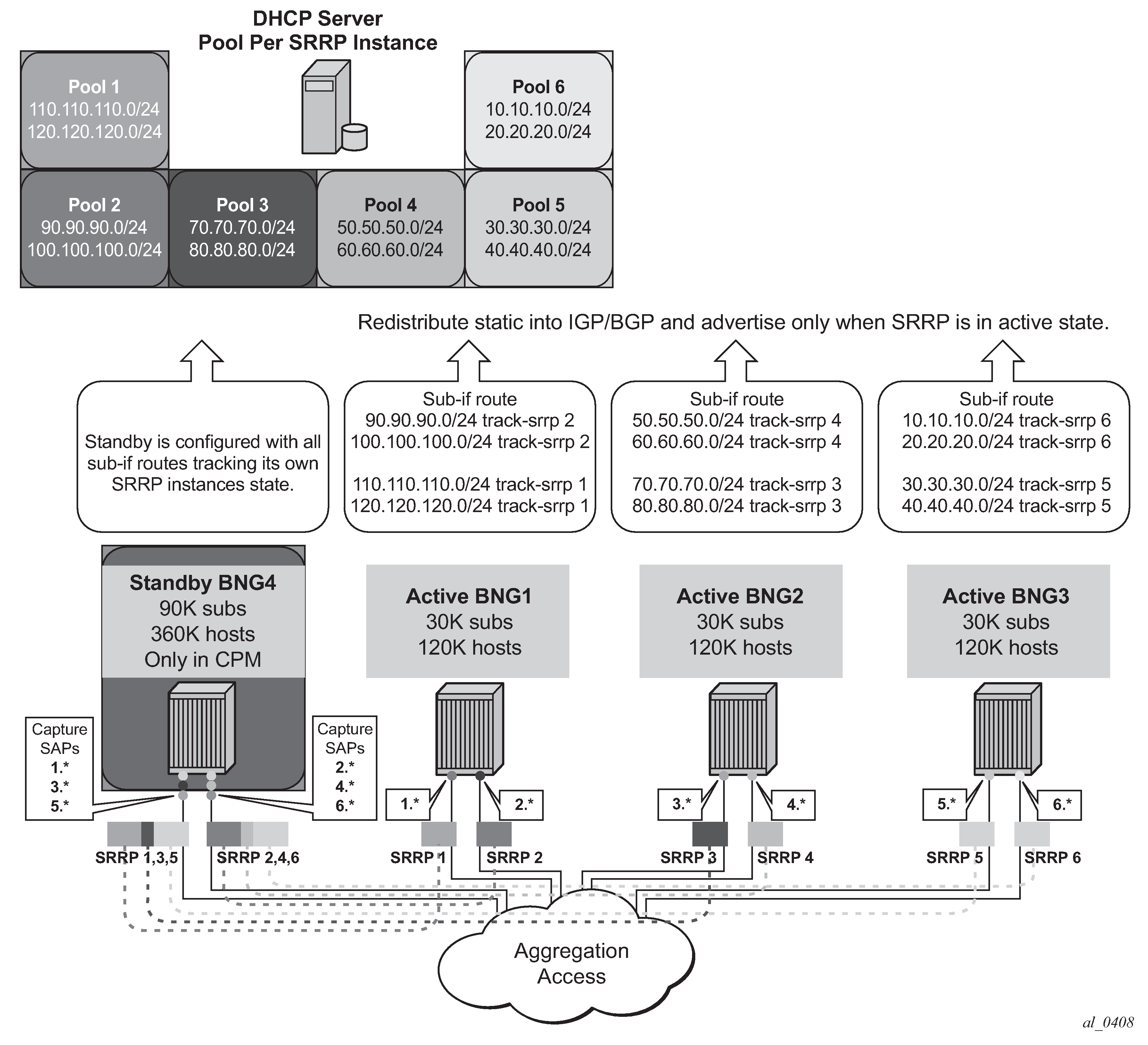Support for redundant interface is limited and can be used only in cases where subscribers are activated in the protecting node. In other words, the shunting over the redundant interface cannot be used if subscriber hosts are not fully instantiated (in the data and control plane). For this reason, downstream traffic must not be attracted (via routing) to the protecting node while the subscriber hosts are in the standby mode (SRRP is in a backup state).
During the transient period while the switchover is in progress, subscriber hosts are being instantiated or withdrawn (depending on the direction of the switchover) in the data plane on the protecting node. The duration of this process is dependent on the number of the hosts that needs to be instantiated/withdrawn and it is proportional to the regular host setup/tear-down rates. The redundant interface in this case can be used only for the hosts that are present in the data plane during the switchover transitioning period (from the moment that they are instantiated in the dataplane when protecting node is assuming activity, or up the moment when they are withdrawn from the data plane when the protecting node is relinquishing activity).
The following routing models are supported:
Case 1
SRRP-Aware routing where subnets can be assigned per group-interfaces (SRRP instances). In a steady state, the redundant interface is not needed because the downstream traffic is attracted to the active node (SRRP master state). During switchover periods (routing convergence transitioning periods), redundant interface can be used only for the subscriber hosts that are instantiated in the data plane (from the moment that they are instantiated in the dataplane when protecting node is assuming activity, or up the moment when they are withdrawn from the data plane when the protecting node is relinquishing activity). See Figure: Subnet per group interface.
Case 2
SRRP-Aware routing where subnets spawn (are aggregated) over multiple group-interfaces (SRRP instances). In case of a switchover, /32 IPv4 addresses and /64 IPv6 addresses/prefixes are advertised from the protecting node. In a steady state, the redundant interface is not needed because the downstream traffic is attracted via more specific routes (/32s and /64s) to the active node (SRRP master state). During switchover periods (routing convergence transitioning periods), the redundant interface can be used only for the subscriber-hosts that are instantiated in the data plane (from the moment that they are instantiated in the dataplane when protecting node is assuming activity, or up the moment when they are withdrawn from the data plane when the protecting node is relinquishing activity). To reduce the number of routes on the network side, /32s and /64s should only be activated on the protecting node.

A deployment case that is not supported is the one where subnets spawn (are aggregated) over multiple group-interfaces (SRRP instances) and at the same time /32s are not allowed to be advertised from the protecting node. This scenario would require redundant interface support while subscriber-hosts are not necessarily instantiated in the protecting node.